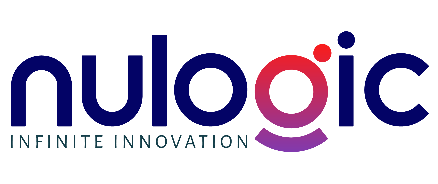In an article published in Wired, Sramana Mitra, founder of One Million by One Million envisions Web 3.0 as an unparalleled convergence of content, context and community to deliver an unprecedented intimate, highly personalized and secure shopping experience. This sums up the changes and challenges that the advent of Web 3.0 represents for ecommerce.
Even with the explosive growth of ecommerce today, under the context of Web 2.0 there are still Achilles’ heels, such as:
- Content sponsored by third parties
- Results that do not satisfy the user’s search intentions.
- Lack of tracking, gaps in traceability
- High dependence on third parties for multiple services such as banks, payment gateways, public or private payment processing networks.
These are some of the drawbacks that Web 3.0 solves for a more direct, secure and economic e-commerce. Let’s take a closer look at the challenges and changes that Web 3.0 brings to ecommerce.

How has commerce been impacted by the evolution of the Internet?
We summarize this chronology in a few brief lines:
Web 1.0
- 1989 Tim Berners-Lee announces the advent of Web 1.0, which, needless to say, represented an impact on humanity as significant as the printing press or electricity.
- The static Internet or reading Internet is born.
- Major search engines such as Yahoo! or an incipient Google come to the fore.
- Anyone with access to the web could put a static catalog online.
- Web portals with unidirectional content are created.
- Poor, limited and centralized shopping experiences.
- Telephone, SMS and email communication.
- The dotcom boom and bubble is born.
Web 2.0
- Mid-2000s, social networks are born.
- The Internet becomes more collaborative and communitarian.
- Large communities are created for marketing and sales.
- Targeted advertising boom
- Shared content and user reviews
- More interactive communication and shopping experience
- High dependence on third-party services (payment networks, gateways, gateways, marketplaces).
- Power centered on big players: Amazon, Google, Meta, Walmart, Alibaba, among others.
The new Web3 is based on Blockchain, here a whole installment dedicated to Blockchain technology in e-Commerce: What’s new, applications and benefits.
Web 3.0
Today we are experiencing a new change, the Web 3.0 also called Web3 or semantic web, one based on blockchain technology or Blockchain, whose basic principle of distributed data records and open source decentralizes the internet.
In other words, a network of private servers owned by large corporations is replaced by an independently owned decentralized network in which the blockchain operates.
This semantic web integrates with other disruptive technologies such as AI, machine learning, virtual and augmented reality to enhance the user experience and make search results more efficient and targeted.
Yahoo Finance highlights how Web 3.0 represents an open and decentralized ecosystem, in which users and creators have equal participation in decision-making, eliminating third parties that centralize information and services, as well as their interference and costs.
Some of the challenges and changes that Web 3.0 brings to ecommerce have already been anticipated, but let’s continue with more details.
Do you want to know solutions to increase the potential of your online business? Get to know: Contentful Agile Ecommerce and CommerceTools, what they consist of and their advantages.
Impact of Web 3.0 on eCommerce
Let’s recall the attributes of Web 3.0: based on Blockchain, decentralized, open source, where data ownership rests with the users. These conditions represent some benefits for companies.
Greater transparency
Web 3.0 is based on the principle of distributed registries in which a series or network of peer-to-peer nodes are responsible for carrying out transactions and validating them.
Under this principle, each independent node keeps a copy of the transaction log, making it practically impossible for a third party to manipulate the information.
Based on this operation, each element of a commercial relationship will enjoy transparency.
In fact, the blockchain will make it possible for all parties to a contract or transaction to track the status or products and ensure that they are not diverted or misused along the links in the supply chain.
Better integration with other technologies
The Semantic Web will be the true immersive internet in the style of Metaverse and bots that base their operation on AI and deep learning, to enhance the customer experience.
With the comment with which we began this installment, we will be in the presence of a true confluence of content and context.
The marketing firm Operation ROI highlights how AI, ML, VR and AR under the Web 3.0 environment will allow customers to find exactly what they are looking for, under a truly personalized experience and connection with brands.
Enhanced security
Again under the argument of blockchain operation, any transaction is recorded on the independent network only under consensus, after which it is encrypted and linked to the previous cryptographically stamped transaction.
In this way the security of Web 3 represents an advance over its predecessors.
Cost reduction
We have already anticipated that Web 3.0 is a peer-to-peer network; any business will no longer need to pay third parties for registration, verification, validation or gateway services.
All network users will have the same right and ability to access a single immutable copy of the records, which limits the need to pay for verifying profiles or credentials.
Increased efficiency
Even in the age of digital transformation, processes are plagued by paperwork, error-prone human scrutiny, interest management or third-party intervention.
The distributed records of Web 3.0 under a single shared ‘digital ledger’ endows the network with trust and by dispensing with third parties operations such as validations, clearances or payment settlements can be perfected more quickly.
More in context: What you need to know about NFTs and their importance in Web 3.0.
Advent of Web 3.0 for eCommerce – Final Thought
There is no single or set date for the migration to Web 3.0, the changes are happening in a very subtle and gradual way, but it is a fact that it will impact eCommerce.
Its massive embrace will bring to the digital ecosystem a more personalized, transparent and secure buying and selling experience, for which online sellers must be prepared, attentive to the changes, researching and training their collaborators.
At NULogic we disseminate and enable new technologies for digital commerce and strive to be at the forefront of information technology and eCommerce solutions with an exceptional level of efficiency, security and support.
Want to take your eCommerce or online business to the next level? Contact our specialists.


